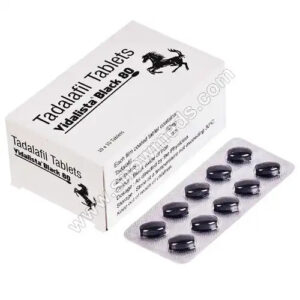Exploring The World Of Non-Invasive Pain Relief Techniques
Globally, chronic pain disorders place a heavy cost on people. A clear view of the pros and cons of opioids and other pharmaceutical treatments is necessary. Noninvasive nonpharmacological therapies or treatments (NINPT) are a very broad category of treatment interventions that are effective in providing adjunct pain relief for chronic pain that does not involve the use of drugs. These treatment approaches include physical therapy, psychology, different types of CAM and other innovations. If you have some joint problems and they are not stable in Dover then you should consider osteopath Dover Kent.
The following methods work well for both sudden, acute pain and persistent, chronic pain relief. These methods work best when paired with many treatments, however they are capable of being used alone as well. Consult your pain relief expert for more guidance.
Heat And Cold
For some types of injuries, these two time-tested techniques continue to be the mainstays of pain relief. Asking a physical therapist or chiropractor for their recommended variations of hot or cold packs might help if a handmade one doesn’t work well because they have the ability.
Exercise for Pain Relief
Exercise is a physical activity done to regain range of motion, strengthening, and flexibility. Includes a variety of activities such as stretching, aerobic routines, aquatic therapy, and the McKenzie technique. May consist of resistive, passive, and active components. Exercise is essential for maintaining good disc nutrition, cardiovascular health, as well as musculoskeletal health.
Massage
Giving someone a massage may seem like a fun and simple approach to pain relief and exhaustion. But it can also function as a standalone therapy. There are several advantages of massage:
- Increased blood supply to the ligaments, tendons and muscles
- An increase in the body’s antidepressant chemicals dopamine, serotonin, and others
- A reduction in the chemicals associated with stress
- This therapy is applied to:
- Lymphedema, or swollen limbs, following breast cancer surgery
- Disorders of the skeletal system (fibromyalgia, spasms)
- Injuries related to sports (plantar fasciitis, tendinitis)
- Whiplash
Physical Therapy (PT)
After a serious illness or a condition like a stroke trauma or surgery, PT gives you a rehabilitated practice as well. This way, physical therapy (PT) differs from other types of rehabilitation where patients are immediately put through regular high-intensity workouts. Methods employed in physical therapy:
- Soft tissue and joint work
- Ultrasound-based therapy
- Braces or Tape
- this TENS, or electrical stimulation
Therapy is applied to:
- Fibromyalgia (excessive tiredness and extensive muscular discomfort)
- Lymphatic swelling throughout the limbs due to cancer
- Pelvic discomfort
- The inability to urinate
Mind-Body Methods
These methods, which include breathing exercises, mindfulness, and meditation among many others, assist you in regaining authority over your physical being and suppressing the “fight or flight” reaction, which exacerbates chronic pain and muscular tension.
Tai Chi And Yoga
These two actual calls employ meditation, breath control, and gradual movements to develop and elongate muscle tissues. Pain relief can be achieved through various medications especially in conditions such as headaches and migraines arthritis situations and chronic injuries among other illnesses as pointed out in the following literature.
Behavioural Modification
Using behavioural techniques to improve a patient’s reaction to unpleasant stimuli and back pain is known as a behavioral modification.
Biofeedback
Through the use of a biofeedback system—which converts physiological function data, which includes blood pressure and heart rate—this approach teaches breathing as well as relaxation techniques. The machine generates visual clues, such as a graph, a light that changes colour, or even an animated sequence. By observing and adjusting the visualizations, you may exert some influence over how your body reacts to pain.
Massage Therapy
Massage therapy is more than just a luxury; it may cause of pain relief by relaxing tense muscles and ligaments, reducing stress and anxiety, and occasionally assisting you ignore pain by creating a “competing” feeling that blocks pain signals.
Chiropractic Adjustments
With this therapy, regulated, quick force is used to alter the spine (or other joints). The objective is to improve an injured body part’s range of motion. Before beginning therapy, your chiropractor ought to receive a complete medical history and any required X-rays. This therapy is applied to:
- Persistent low backache
- Shoulder or neck discomfort involving muscles and bones
- Headaches
- Issues with the hands or feet
Electrotherapy
Electrical stimulation of the skin (TENS) is the most well-known type of electrotherapy. Through the use of low-voltage stimulation with electricity that interacts with the nerves that control the sensation system, TENS treatment aims to alleviate back pain. Results from randomized controlled studies have shown that TENS is an effective therapy for back pain, either positively or neutrally.
Techniques For Relaxing
Biofeedback, music therapy, breathing exercises, and meditation are examples of calming therapies. They function by diverting your attention from the discomfort.
You respond to pain similarly to how you would react if you encountered a bear. Your instinct is to “fight or fight.” Initially, your body generates adrenaline, which causes both the muscles and the heart to get more blood flow very rapidly. Your body then enters high gear in preparation for action.
Final Words
The most efficient pain management techniques for treating back and neck discomfort are constantly being studied via research in clinical settings. If a patient has any queries about a particular programme, they should speak with their physician.



